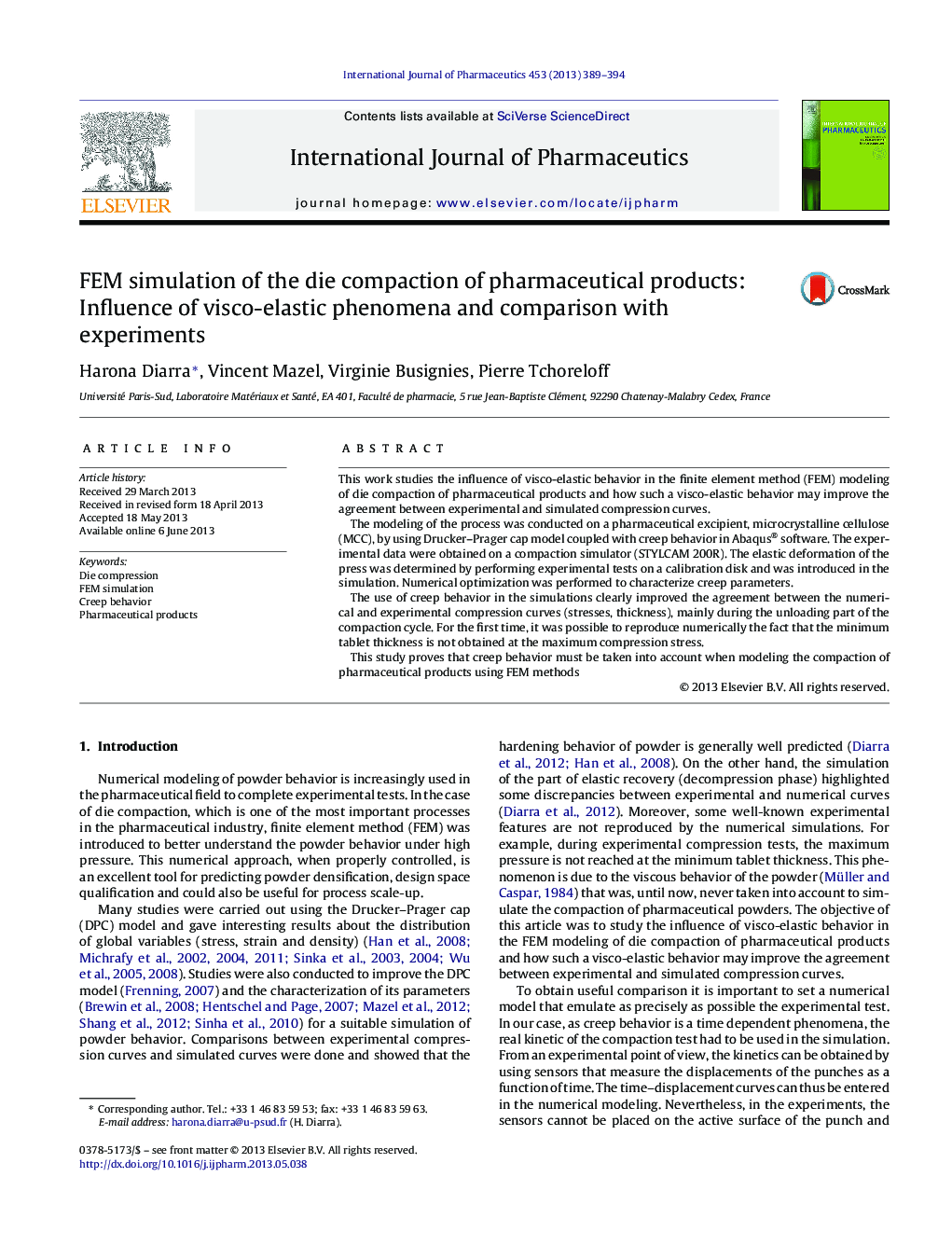| Article ID | Journal | Published Year | Pages | File Type |
|---|---|---|---|---|
| 2502187 | International Journal of Pharmaceutics | 2013 | 6 Pages |
This work studies the influence of visco-elastic behavior in the finite element method (FEM) modeling of die compaction of pharmaceutical products and how such a visco-elastic behavior may improve the agreement between experimental and simulated compression curves.The modeling of the process was conducted on a pharmaceutical excipient, microcrystalline cellulose (MCC), by using Drucker–Prager cap model coupled with creep behavior in Abaqus® software. The experimental data were obtained on a compaction simulator (STYLCAM 200R). The elastic deformation of the press was determined by performing experimental tests on a calibration disk and was introduced in the simulation. Numerical optimization was performed to characterize creep parameters.The use of creep behavior in the simulations clearly improved the agreement between the numerical and experimental compression curves (stresses, thickness), mainly during the unloading part of the compaction cycle. For the first time, it was possible to reproduce numerically the fact that the minimum tablet thickness is not obtained at the maximum compression stress.This study proves that creep behavior must be taken into account when modeling the compaction of pharmaceutical products using FEM methods
Graphical abstractPharmaceutical powders exhibit more or less plastic and viscos-elastic behavior when they are compressed. The comparison between numerical (with and without viscous effect) and experimental results emphasizes the improvement of numerical model by using creep behavior in the numerical modeling of die compaction process.Figure optionsDownload full-size imageDownload high-quality image (123 K)Download as PowerPoint slide
